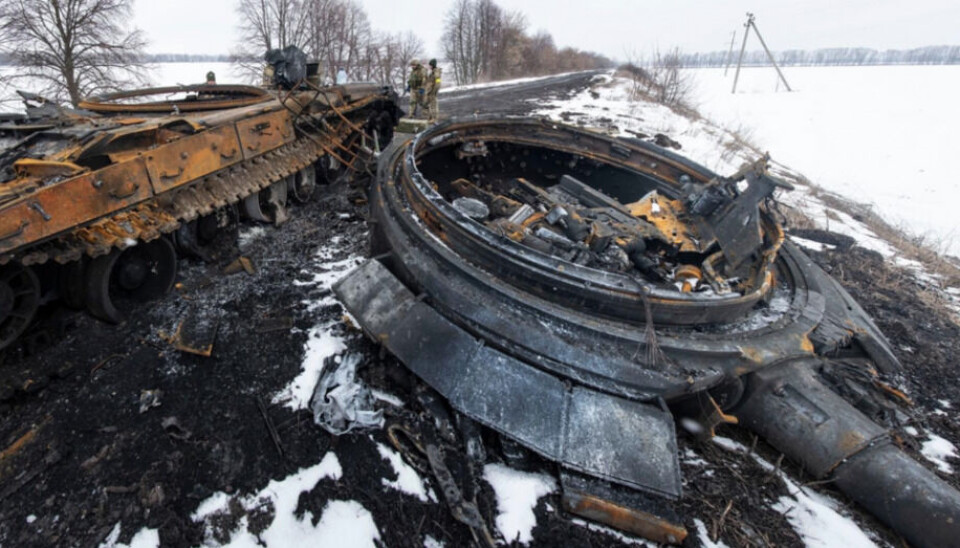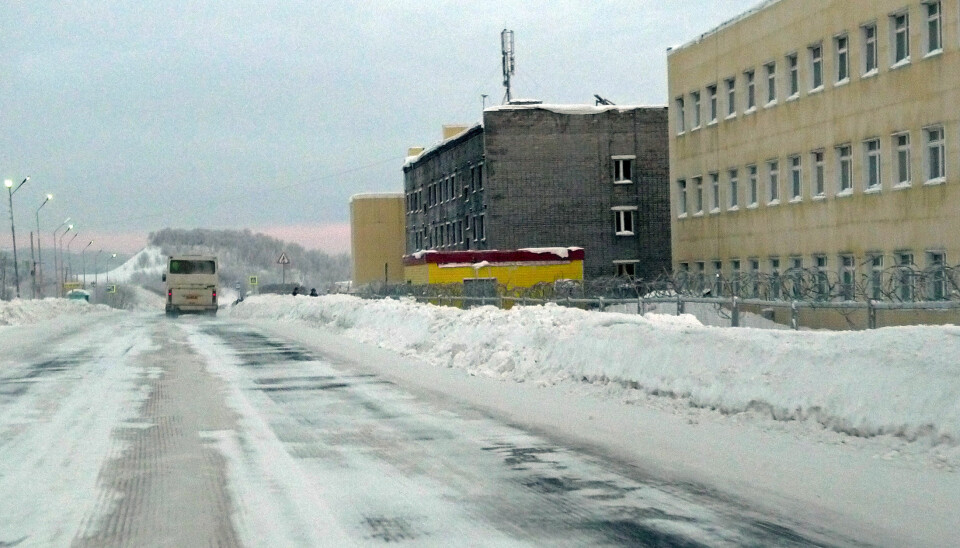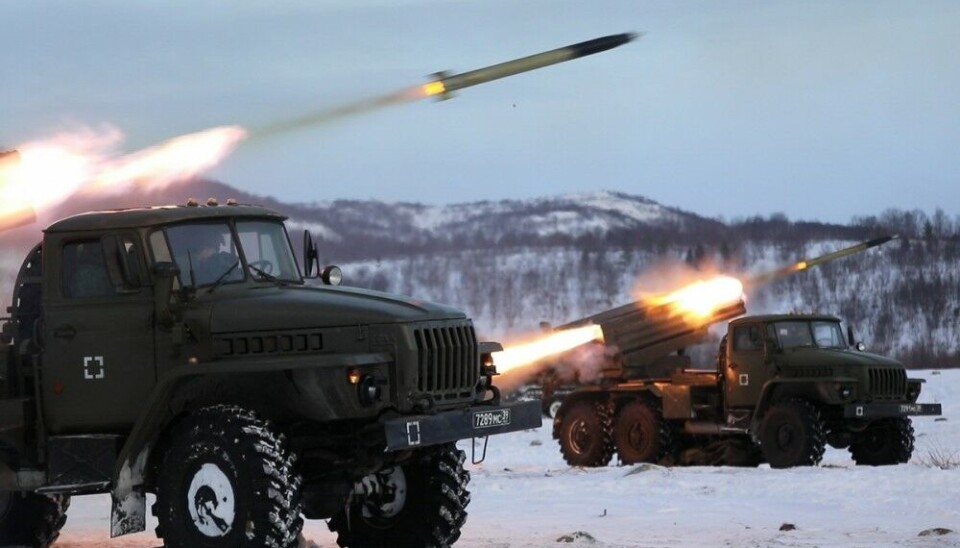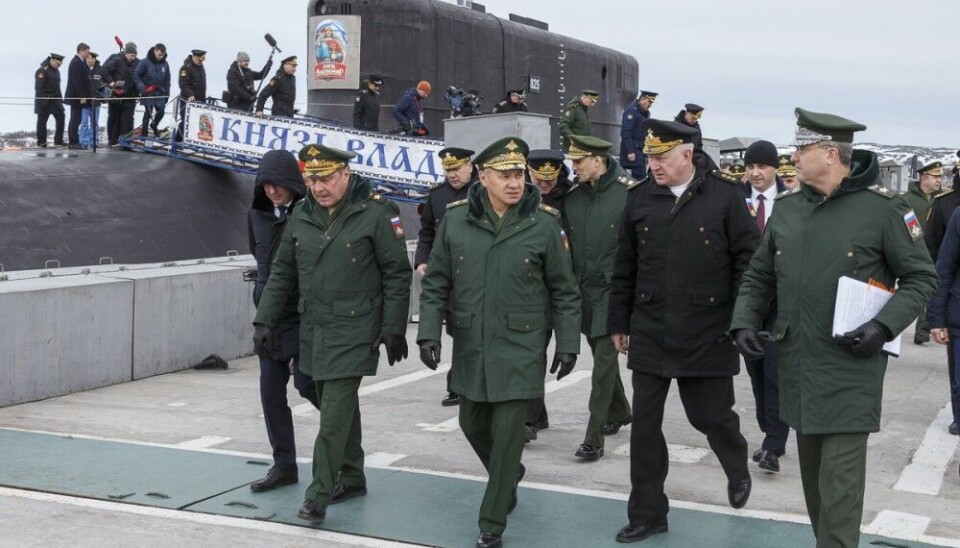
Land forces at Kola reduced to one-fifth, Norwegian Intelligence says
"The land forces on Kola are reduced to a fifth of their original numbers before the invasion of Ukraine," says Chief of the Norwegian Intelligence Service, Vice Admiral Nils Andreas Stensønes to the Barents Observer. He warns that the consequence is a Russia which may lower the threshold for nuclear escalation, also near Norway.
Tears are flowing to the Pechenga River from young widows and children as names of fallen soldiers are telegrammed north from Vladimir Putin’s battlefields in Ukraine. The bloody fate of the men that just over a year ago were based near Russia’s peaceful border with Norway and Finland is much worse than previously known, according to a report issued on Monday by the Norwegian Intelligence Service.
1,500 troops are killed. Maybe more.
The men with the 200th Separate Motor Rifle Brigade had their training camps along the Pechenga River; at 19 km, in Loustari and in the village of Pechenga. All are less than an hour’s drive from the border with Norway.
In late 2021, the first orders were given to load up tanks, armored vehicles, guns, artillery, and other gear onto railway wagons at the train station in Loustari. Soldiers were ordered into passenger railroad cars.
Exercise in southern Russia, they were told.
On the night of February 24, Putin ordered his military commanders to invade Ukraine. A few hours later were vehicles from the 200th Motorized brigade rolling towards Kharkiv, the second largest city in Ukraine, just 30 kilometers south of the Russian border.
Putin’s soldiers were met not with flowers, but fierce resistance.
In the early stage of the war, the 200th Separate Brigade from the Kola Peninsula lost two battalion tactical groups. The Barents Observer reported about 645 killed during the first month, while other reports hinted the numbers of casualties were higher.
Before schools started in the Murmansk region last autumn, regional authorities launched free meals for pupils whose parents were killed or wounded in Ukraine. At the time, 1,274 children qualified, a strong indication of the wave of deaths among fathers who would never again see their children become students.
Wiped out
The Norwegian Intelligence, which since the second world war has kept close eyes on the military ups and downs in the Pechenga region, says in its FOKUS 2023 report that about three battalion groups, with 3,000 soldiers, were sent to the battlefields.
“About half is lost,” the report concludes. That is 1,500 dead soldiers.
The Northern Fleet has in addition lost up to 100 tanks and armored vehicles.

During the summer and autumn of 2022, the 200th Motorized Brigade got new soldiers earmarked for the war. Some volunteers, some veterans, and some mobiks, the Russian slang for the thousands of men mobilized after September 21.
The vast majority of the newcomers had limited military experience, and the training at the Kola Peninsula lasted only for a few weeks.
World War II helmets
Some of the men drafted under Putin’s mobilization to the 200th Brigade were simply given a rifle and sent more or less directly to the front. Others say they were given painted helmets from 1941 and vests without plates.
Many are already slaughtered on the current battlefields in eastern Ukraine.
Especially the first week of February this year was bad, with the British Defense Ministry on Sunday claiming the Russian mean average for the last seven days was 824 casualties per day. That is over four times the rate reported as daily average deaths in June and July 2022.
About half of the original Russian invasion force of 200,000 soldiers are dead or wounded, the Norwegian Intelligence report said. How many of the later volunteers and mobiks that are killed is unclear.
What is clear is that Vladimir Putin’s regime has sent Russia into its worst self-inflicted disaster since Stalin’s cruel execution and starvation of his own citizens.
Rosstat, the state statistics agency, has not yet published Russia’s excess mortality for 2022.
Village of widows

Additional to the 200th Brigade, the land forces on the Kola Peninsula consist of the 61st Naval Infantry Brigade in Sputnik and the 80th Arctic Motor Rifle Brigade in Alakurtti.
Rearmament will follow
While the war is going terribly wrong for Moscow, the Norwegian Intelligence Chief warns that the current weakening of conventional forces in the Russian north is time-limited.
“[Weakened forces] is correct from a situation awareness perspective, but is wrong from a planning perspective,” says Nils Andreas Stensønes.
“Russia will make changes in military materials and structures of forces as a result of weaknesses uncovered during the invasion of Ukraine.”
The Vice Admiral says it is to be expected that existing procurement plans, budgets, and organizational planning will be adjusted.
“Given that Russia is able to learn from, and correct, mistakes, the country’s conventional combat capability will be strengthened in the long term,” Stensønes says to the Barents Observer.

Strategic power remains
Although conventional severely weakened, the Arctic remains very important to Russia’s military planners.
Strategic bombers have been moved from the Engels Air Force Base in Saratov after proven vulnerable to Ukrainian drones. Recent satellite images show what appears to be Tu-95 and/or Tu-160 bombers lined up at the apron at Olenegorsk Air Base south of Murmansk. Also, the ballistic missile submarines, important for Russia’s deterrence, have their main European base in Gadzhiyevo, a short 100 km east of the border with NATO-member Norway.
Intelligence Chief Stensønes says important parts of Russia’s military power potential are not challenged with the war on Ukraine.
“This applies to the strategic forces at Kola, where nuclear weapons, submarines, naval vessels, long-range air defense and electronic warfare capabilities remain more or less intact.”
Stensønes says nuclear weapons will temporarily assume a more prominent role in Russia’s regional defense compared with conventional deterrence.
“This means that the threshold for nuclear escalation will be lower, also in areas near Norway.”

Tactical news back-in-business
The most sensational news in the Norwegian FOKUS 2023 report is the assessment that Northern Fleet’s surface warships again could sail with tactical nuclear weapons.
“A central part of the nuclear capabilities is on the Northern Fleet’s submarines and surface vessels. Tactical nuclear weapons pose a particularly serious threat in several operational scenarios that may involve NATO countries,” the Norwegian Intelligence Service’s annual report states.
In Soviet times warships from Severomorsk sailed with tactical nuclear weapons, but confirmation that such smaller nukes could be at sea has not been said loudly since the latter days of the last Cold War.
In a report to the U.S. Congress last year about Russia’s nuclear doctrine and weapons modernization, it was confirmed that several new short-range delivery systems that can carry tactical nuclear warheads are developed. However, the report said, it has never been confirmed that nuclear-capable cruise-missile systems like the Kalibr, Tsirkon, and other naval weapons actually are deployed at sea with nukes.
The Barents Observer has previously reported about the five different storage locations for nuclear weapons on the Kola Peninsula.
Russia is believed to have about 2,000 nonstrategic nuclear warheads.
The Kremlin itself has not made any recent rhetoric nuclear saber-rattling, but instead let awkward voices like former president Dmitri Medvedev and Russian propagandist TV-anchor Vladimir Solovyov call for the use of nukes on NATO.
–
PS! This article was edited on February 15 with adding the word “could” to the sentence on the Northern Fleet’s surface warships “could” be sailing with tactical nuclear weapons, as there are different opinions on the translation-meaning of the wordings from the Norwegian Intelligence report as the Barents Observer quoted in the paragraph after.
The Intelligence Service updated the online text-version of the report after this article was published in order to clarify. The Barents Observer published an up-date on the changes on February 16.















